Articles
- Page Path
- HOME > J Korean Powder Metall Inst > Volume 23(4); 2016 > Article
-
Article
- Fabrication of Sintered Compact of Fe-TiB2 Composites by Pressureless Sintering of (FeB+TiH2) Powder Mixture
- Xuan-Khoa Huynha, Ji Soon Kimb,*
-
Journal of Korean Powder Metallurgy Institute 2016;23(4):282-286.
DOI: https://doi.org/10.4150/KPMI.2016.23.4.282
Published online: July 31, 2016
a School of Materials Science and Engineering, Hanoi University of Science and Technology, No 1, Dai Co Viet Street, Hanoi City, Vietnam
b School of Materials Science and Engineering, University of Ulsan, 93 Daehak-ro, Nam-gu, Ulsan 44610, South Korea
- * Corresponding Author: Ji Soon Kim, TEL: +82-52-259-2244, FAX: +82-52-259-1688, E-mail: jskim@ulsan.ac.kr
© The Korean Powder Metallurgy Institute. All rights reserved.
- 713 Views
- 1 Download
- 3 Crossref
Abstract
- A sintered body of TiB2-reinforced iron matrix composite (Fe-TiB2) is fabricated by pressureless-sintering of a mixture of titanium hydride (TiH2) and iron boride (FeB) powders. The powder mixture is prepared in a planetary ball-mill at 700 rpm for 3 h and then pressurelessly sintered at 1300, 1350 and 1400°C for 0-2 h. The optimal sintering temperature for high densities (above 95% relative density) is between 1350 and 1400°C, where the holding time can be varied from 0.25 to 2 h. A maximum relative density of 96.0% is obtained from the (FeB+TiH2) powder compacts sintered at 1400°C for 2 h. Sintered compacts have two main phases of Fe and TiB2 along with traces of TiB, which seems to be formed through the reaction of TiB2 formed at lower temperatures during the heating stage with the excess Ti that is intentionally added to complete the reaction for TiB2 formation. Nearly fully densified sintered compacts show a homogeneous microstructure composed of fine TiB2 particulates with submicron sizes and an Fe-matrix. A maximum hardness of 71.2 HRC is obtained from the specimen sintered at 1400°C for 0.5 h, which is nearly equivalent to the HRC of conventional WC-Co hardmetals containing 20 wt% Co.
- Adding refractory particles to the Fe matrix as dispersoid improves mechanical properties of the matrix and increases wear resistance. Among various ceramic particulates, TiB2 is considered to be one of the best reinforcements for steel matrix. Fe-TiB2 composite has attracted much attention due to its excellent mechanical properties. Various methods for the synthesis of TiB2 phase have been reported and can be summarized as follows: laser cladding [1,2], plasma transferred arc (PTA) [3,4], aluminothermic reduction [5], spark plasma sintering (SPS) [6], and selfpropagating high temperature synthesis (SHS) [7-10]. These reports indicate that TiB2 particles can be formed in situ via different routes from various initial materials.
- The technique of in situ synthesis is widely used for fabricating composites. In general the in situ processes involve synthesizing the reinforcing phase within a matrix during composite fabrication by a chemical reaction between elements or their compounds. In situ formation process normally leads to the clean particle-matrix interfaces with higher interfacial strength (improved wettability), fine reinforcement size and homogeneous particlesize distribution (improved mechanical properties) [11]. We also reported already a result on in situ fabrication of Fe-TiB2 nanocomposite powder having TiB particulates smaller than 5 nm by planetary ball-milling and subsequent heat-treatment of (FeB+TiH2) powder mixture [12]. For a further application of the Fe-TiB2 nanocomposite powder, a sintering is inevitable. Pressureless sintering is a simple and easy consolidation method that can produce a wide range of sintered geometries. However, for nanocomposite powders it should be performed that the grain growth or coarsening of reinforcement particulates will not occur or can be minimized.
- In this work the feasibility of pressureless-sintering for the fabrication of Fe-TiB2 composites is investigated from the experimental results of sintered density, microstructure and hardness.
1. Introduction
- A composite powder with a composition of Fe-40 wt.% TiB2 (55 vol.%) was fabricated from commercial iron boride (FeB) powder with 19 wt.% of boron and TiH2 starting powders. FeB and TiH2 powders were mixed for 2h in a turbular mixer and then high-energy milled in a planetary ball mill (AGO-2) at 700 rpm for 3 hours. The detailed high-energy milling process is given in our previous work [12].
- The as-milled powder mixture was compacted by double- acting compaction using 10 mm cylindrical tool-steel die at pressure of 100 MPa. The green compacts were pressureless-sintered in a tube furnace (ThermVac., South Korea) under flowing Ar gas. Sintering conditions of temperature and time were chosen from a series of preliminary experiments: 1300°C, 1350°C and 1400°C for 0-2 hours. The sintered density was measured by ASTM B962.
- Phase analysis for the sintered body was performed by X-ray diffractometer (XRD) using CuKα radiation. The microstructure was observed and analyzed by using field emission scanning electron microscope (FE-SEM) and energy-dispersive X-ray spectroscope (EDS). Hardness of all the sintered composites was measured by Vickers method using 2 kg load (19.6N, HV2) and the values were converted to Rockwell Hardness (HRC).
2. Experimental Procedures
- 3.1. Sintered density vs. sintering temperature and time
- Fig. 1 shows the change of sintered density as a function of sintering temperature and time. The powder mixture of (FeB+TiH2) was easily compacted at 100 MPa to give the green density of 75% theoretical. At 1400°C, the sintered density reaches to 95% even for short holding time of 0.25 h (15min). Further increase of holding time brings only a slight increase in sintered density (96.0%). At 1300°C, the effect of holding time on densification is evident. The density increases with holding time from 80.1% to 91.2%. At 13500C, the sintered density increases steadily from 87.0% to 93.1% up to the holding time of 1 hour. A further increase in holding time to 2 hours leads to the sintered density of 95.5%. From these results it can be concluded that the optimal sintering temperature is in a range of 1350°C and 1400°C. For most ferrous materials, the pressureless-sintering is carried out in the temperature range of 1100°C and 1300°C or to achieve the higher density the materials should sinter at higher temperature, up to 1350°C [13]. The remarkably high sintering temperature in this study seems to be due to a high amount of TiB2 (55 vol.%). As reported already in our previous work [12], the in situ synthesis reaction of nanoscale TiB2 between Ti from TiH2 and B in FeB occurs at 749°C under the following equation.
- The nanoscale TiB2 particulates homogeneously dispersed in the Fe-matrix seem to retard the densification of Fe-TiB2 composite powder, even though it is expected that the exothermic reaction between Ti and B to form TiB2 phase during the sintering process may enhance the densification by a thermal contribution.
- 3.2. XRD phase analysis
- XRD patterns of selected sintered bodies are shown in Fig. 2. It is evident that as expected, two main phases of Fe and TiB2 are present in all patterns. Similarly to our previous results from the in situ fabrication of Fe-TiB2 nanocomposite powder from (FeB+TiH2) powder mixture [12], it seems that both of two phases keep unchanged after the formation at 749°C through the whole remained sintering process.
- XRD pattern for the sintered compacts at 1350 and 1400°C for 2 hours reveal that there is TiB phase as a minor phase. The peak intensity of TiB increases on the compact sintered at 1400°C for 2h. According to other reports [7, 8], the following reaction can occur when the excess titanium exists:
- It seems that the excess Ti which was intentionally added for a complete reaction of TiB2 formation reacts again at high temperature with the TiB2 formed at lower temperature during heating stage.
- 3.3. Microstructure of sintered compacts
- Fig. 3 shows the SEM images of (FeB+TiH2) powder compacts sintered at 1350°C for 0.5, 1 and 2 hours. The polished cross-section of sintered compact reveals many pores and incompletely densified regions up to the holding time of 1 hour (Fig. 3(a-b)). The increase in holding time to 2 hours results in nearly fully dense microstructure with 95.5% relative density (Fig. 3(c)). It should be noted here that the dark-grey TiB2 particulates can be discerned from the Fe-matrix. The high magnification compoimage (×10,000)(Fig. 3(d)) shows this more clearly. The size of the TiB2 particulates is extremely scattered from several tens nanometer to micron. It is evident that a rapid growth of nanoscale TiB2 particulates occurs between the holding time of 1 and 2 hours at 1350°C.
- Fig. 4 shows the SEM images of (FeB+TiH2) powder compacts sintered at 1400°C for 0.5, 1 and 2 hours. All of them show a similar microstructure with Fig. 3(c) described just before. But they have higher sintered densities and reveal more homogeneous microstructure in the particulate size. The number of fine particulates with several tens nanoscale is drastically reduced. The average size of TiB2 particulates seems to be shifted unimodal to submicron or micron. The overall microstructure is also very homogeneous. Fine TiB2 particulates are evenly distributed in the Fe-matrix, which cannot be obtained from a conventional powder metallurgy process or other approaches. It is reported that the size of TiB2 in the composites fabricated by these methods is in the range of several to tens micrometers.
- 3. 4. Hardness
- Fig. 5 shows the change of hardness as a function of sintering temperature and time. In case of the sintering temperature of 1350°C, it is evident that the increase in sintered density leads to the increase in hardness from 64.8 HRC to 69.1 HRC. The densification effect seems more dominant than the effect of microstructural defects like pores. For the sintering at 1400°C the longer holding time do not result in the increase in sintered density but only the growth of TiB2 particulates. This affects the hardness negatively. Maximum hardness of 71.2 HRC for 0.5 h is slightly decreased to 70.0 HRC for 2 hours, which is nearly equivalent to the HRC of a conventional WC-Co Hardmetals containing 20 wt.% Co [14]. Even though the hardness of TiB2 is higher than WC, it is very remarkable that the Fe-TiB2 composite with 60 wt.% Fe exhibits such a high hardness value. It is because of the homogeneous distribution of TiB2 particulates with relatively fine size of submicron and the sound interface between TiB2 particulates and Fe matrix. If we use a novel sintering method for restraining from grain growth such as the spark-plasma sintering, the hardness will be surely increased also with the same composition here.
3. Results and Discussion
Change in sintered density of (FeB+TiH2) powder compacts as a function of sintering temperature and time.
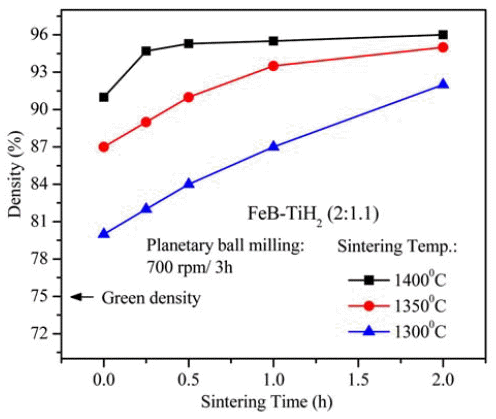
XRD pattern of (FeB+TiH2) powder compacts sintered at 1300°C for 0.25 h (bottom), at 1350°C for 2 hours (middle) and at 1400°C for 2 hours (top).

SEM images of (FeB+TiH2) powder compacts sintered at 1350°C for (a) 0.5h, (b) 1h, (c) 2h (x3,000), and (d) 2h (×10,000, compo-image).
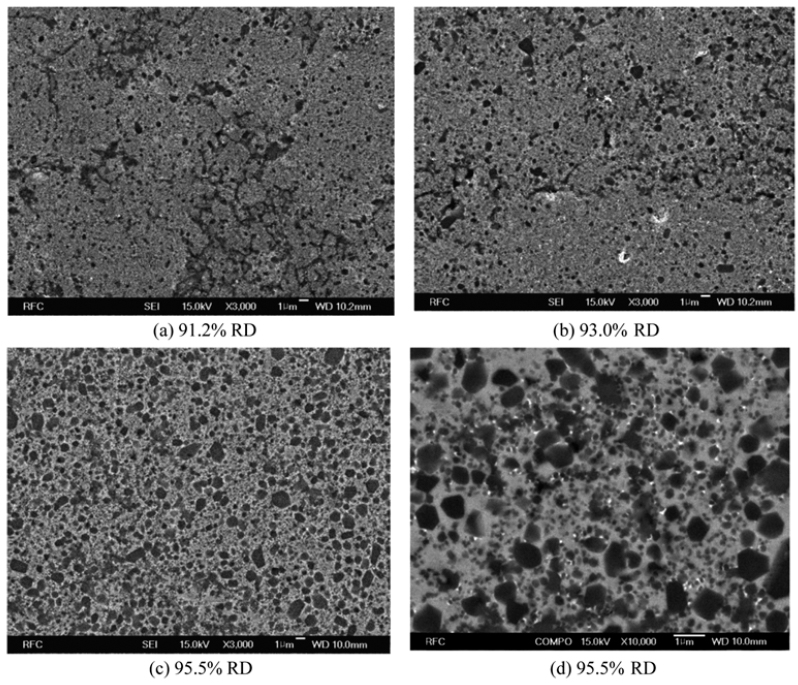
SEM images of (FeB+TiH2) powder compacts sintered at 1400°c for (a) 0.5h, (b) 1h, (c) 2h (×3,000), and (d) 2h (×10,000, compo-image).

- Sintered body of the TiB2-reinforced iron matrix composite (Fe-TiB2) was fabricated by pressureless-sintering of the mixture of titanium hydride (TiH2) and iron boride (FeB) powders. From the results of sintered density, X-ray phase analysis, observation and analysis of microstructure with use of FE-SEM and EDS, and hardness measurements the followings can be concluded:
(1) The optimal sintering temperature for high density above 95% relative density is between 1350-1400°C, where the holding time can be varied from 0.25-2 hours. Maximum 96.0% relative density is obtained from the (FeB+TiH2) powder compacts sintered at 1400 for 2 hours.
(2) In case of sintering at 1300°C, the sintered density increases with holding time, while the sintering at 1400°C shows almost no change in sintered density after the holding time of 0.5 h.
(3) Sintered compacts have two main phases of Fe and together with trace of TiB which seems to be formed through the reaction of TiB2 formed at lower temperature during heating stage and the excess Ti which was intentionally added for a complete reaction of TiB2 formation.
(4) Nearly fully densified sintered compacts show homogeneous microstructure composed of fine TiB2 particulates with submicron size and Fe-matrix.
(5) Maximum hardness of 71.2 HRC is obtained from the specimen sintered at 1400 for 0.5 hour which is nearly equivalent to the HRC of a conventional WC-Co Hardmetals containing 20 wt.% Co.
4. Conclusion
-
Acknowledgements
- This work was supported by the National Research Foundation Grant funded by the Korean Government (NRF-2012R1A1A2044930).
Acknowledgements
- 1. B. Du, Z. Zou, X. Wang and S. Qu: Appl. Surf. Sci., 254 (2008) 6489. .Article
- 2. B. Du, Z. Zou, X. Wang and S. Qu: Mater. Lett., 62 (2008) 689. .Article
- 3. M. Darabara, G.D. Papadimitriou and L. Bourithis: Surf. Coat. Technol., 201 (2006) 3518. .Article
- 4. W. Xibao, W. Xiaofeng and S. Zhongquan: Surf. Coat. Technol., 192 (2005) 257. .Article
- 5. A. Anal, T.K. Bandyopadhyay and K. Das: J. Mater. Process. Technol., 172 (2006) 70. .Article
- 6. B. Li, Y. Liu, H. Cao, L. He and J. Li: J. Mater. Sci., 44 (2009) 3909. .Article
- 7. O.K. Lepakova, L.G. Raskolenko and Y.M. Maksimov: Combust. Explos. Shock Waves, 36 (2000) 575. .Article
- 8. C.C. Degnan and P.H. Shipway: Metall. Mater. Trans. A, 33 (2002) 2973. .Article
- 9. L. Gai and M. Ziemnicka-Sylwester: Inter.J. Refract. Met. Hard Mater., 45 (2014) 141. .Article
- 10. O.K. Lepakova, L.G. Raskolenko and Y.M. Maksimov: J. Mater. Sci., 39 (2004) 3723. .Article
- 11. R.M. Aikin: JOM, 49 (1997) 35. .Article
- 12. X.K. Huynh, S.W. Bae and J.S. Kim: Korean J. Met. Mater., To be published in 55 (2017). .
- 13. R.M. German: Powder Metallurgy of Iron and Steel, John Wiley & Sons Inc., New York (1998) 192. .
- 14. K.J.A. Brooks: World Directory and Handbook of Hardmetals and Hard Materials, International Carbide Data, Hertfordshire, (1996) 96..
Figure & Data
References
Citations

- Optimizing the Microstructure and Properties of Fe–Ni–Cu–Mo–C Sintered Steel by TiB2
Zenglin Liu, Yankang Wang, Weilong Lu, Feng Liu, Wei Han, Wuqiang He
Science of Advanced Materials.2024; 16(6): 707. CrossRef - Effect of Ce Addition on the As-Cast and As-Forged Microstructure of Fe-TiB2 Composites
Lin Zhang, Jianwen Gao, Minghao Huang, Engang Wang
JOM.2019; 71(11): 4144. CrossRef - Microstructure, mechanical, and tribological properties of pressureless sintered and spark plasma sintered Fe TiB2 nanocomposites
Hak-Rae Cho, Ji-Soon Kim, Koo-Hyun Chung
Tribology International.2019; 131: 83. CrossRef

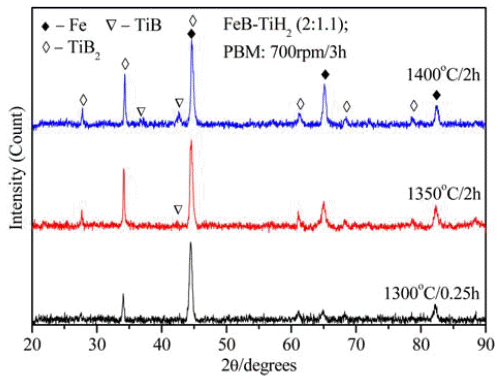

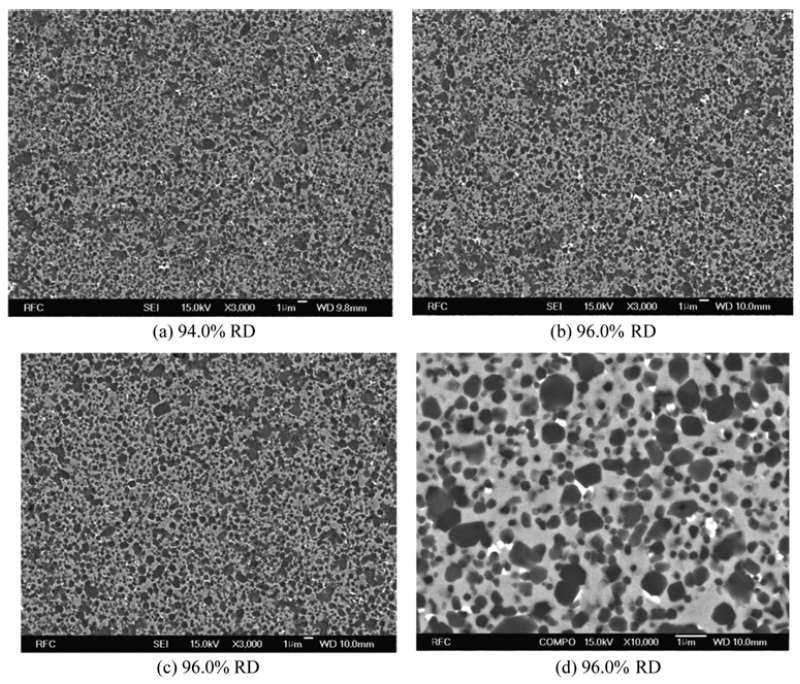
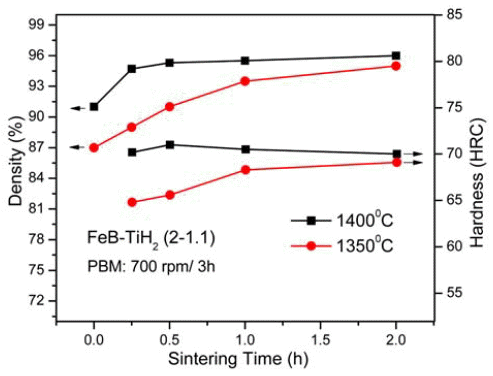
Fig. 1
Fig. 2
Fig. 3
Fig. 4
Fig. 5
TOP
 KPMI
KPMI


 Cite this Article
Cite this Article





